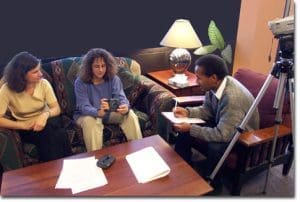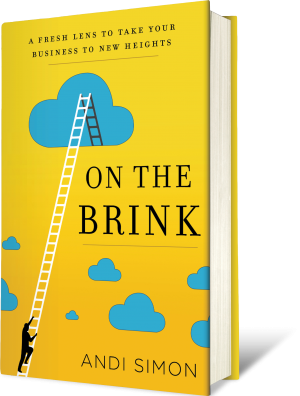You Can Be An Amateur Anthropologist. Here are some easy-to-use tools to get you started!
While there are very good reasons to hire professionally-trained anthropologists to do observational research for you, there are many things you might want to try yourself. In fact, many of our clients have become very good amateur anthropologists. Part of the process is to help you “see, feel and think” in new ways. The brain works best when it discovers new things. And it is far more powerful for you to experience something directly than to just listen to another person tell you about what they saw or heard. Give it a try and tell us how you did.
Some tools you can try:
Spend a “Day in the Life of Your Customer”
-
- Ask your customers, the best or not so best, if you can spend a day shadowing them. The purpose is not to solve a problem. It is to listen and learn more about them and their habits, preferences, patterns. By observing them you are looking for their unsolved needs that might reveal new opportunities for you. Each time we do this with a client, they see business growth staring right at them that they never saw before. One client realized that his sales team kept
hearing prospective customers saying, “What if…” But since they were trying to close a sale, they never paid attention. Those “What if’s…” could be a big idea awaiting you.
- One suggestion: before you go out watching and listening, make a list of open-ended questions and probes that can keep the conversation going. Take a black book in which you can write notes; a recorder or iPad works well, too.
- As soon as you finish, write all of your thoughts down…all of them. Time will easily erase many of the things you saw and felt. So capture them quickly.
- Ask your customers, the best or not so best, if you can spend a day shadowing them. The purpose is not to solve a problem. It is to listen and learn more about them and their habits, preferences, patterns. By observing them you are looking for their unsolved needs that might reveal new opportunities for you. Each time we do this with a client, they see business growth staring right at them that they never saw before. One client realized that his sales team kept
-
- One hotel gave customers disposable cameras and asked them to write about the pictures they took. Wow! What an eye-opener that was. The experience was all about the family and the children. The hotel thought it was all about business travelers and therefore was totally adult-focused. You can imagine what happened next.
- Another hotel put a camera on the cap of a guest and followed him through his experience. The experience was nothing that they had expected, much less what the guest would have desired. That camera told it far better than anyone else could have.
- Marriott did a great deal of ethnographic work before beginning the total renovation of its lobbies. Then they renovated their hotel rooms to be more desirable to the Millennial Generation, the next business travelers.
- A client that designed and manufactured point of purchase displays spent days photographing point of purchase displays, plus a whole lot more in the box stores where their structures were displayed. This taught them a great deal about what they do and how to do it better.
-
- Make a list of 10 open-ended questions you would like to know more about from a customer and non-customer.
- This is about the power of storytelling. You want them to tell you stories about something that matters to them, and to you.
- These cannot be problems to solve. It’s their values, beliefs, actions and particularly the alternative ways they are doing things that are of interest to you. Let the discussion stay open and wide-ranging.
- Practice beforehand. You need rehearsal time. Try it with family or friends. Have them tell you a story about something important to them and see how it materializes into pain points and unmet needs. Those are the ones you are searching for.
- Then try it on a customer.
- Off you go! Do a dozen and start to listen with better clarity. See how fast you open new ideas. See what you learn.
-
- Classic anthropology was founded on doing participant observation. You can do it too.
- Decide on which customers or non-customers you might like to learn more about. Go hang out with them.
- Try doing some “hanging out” with your own employees. Sit in their lunchroom areas and listen to the conversations. Talk with them about their pain points and learn about how they interact with your customers.
- Take lots of notes when you are done. Or photograph what they are doing. Just hang out. And record what you see.
These, we are sure, will develop you into a better observer. The trick is to “see and feel” in new ways. Think of this as “Undercover Boss.”
While you might need additional support from trained anthropologists, your first experience is a very important one to change the way you approach problems and design solutions. Including customers is critically important. But watching them with fresh eyes is equally important.
Should you want more information about how we do anthropological research with and for our clients, please contact us. We will get back to you with some fresh ideas.
Listen to our podcasts:
Or buy our book to learn how we helped our clients sustain their growth in fast-changing times. Available at Amazon.com.





